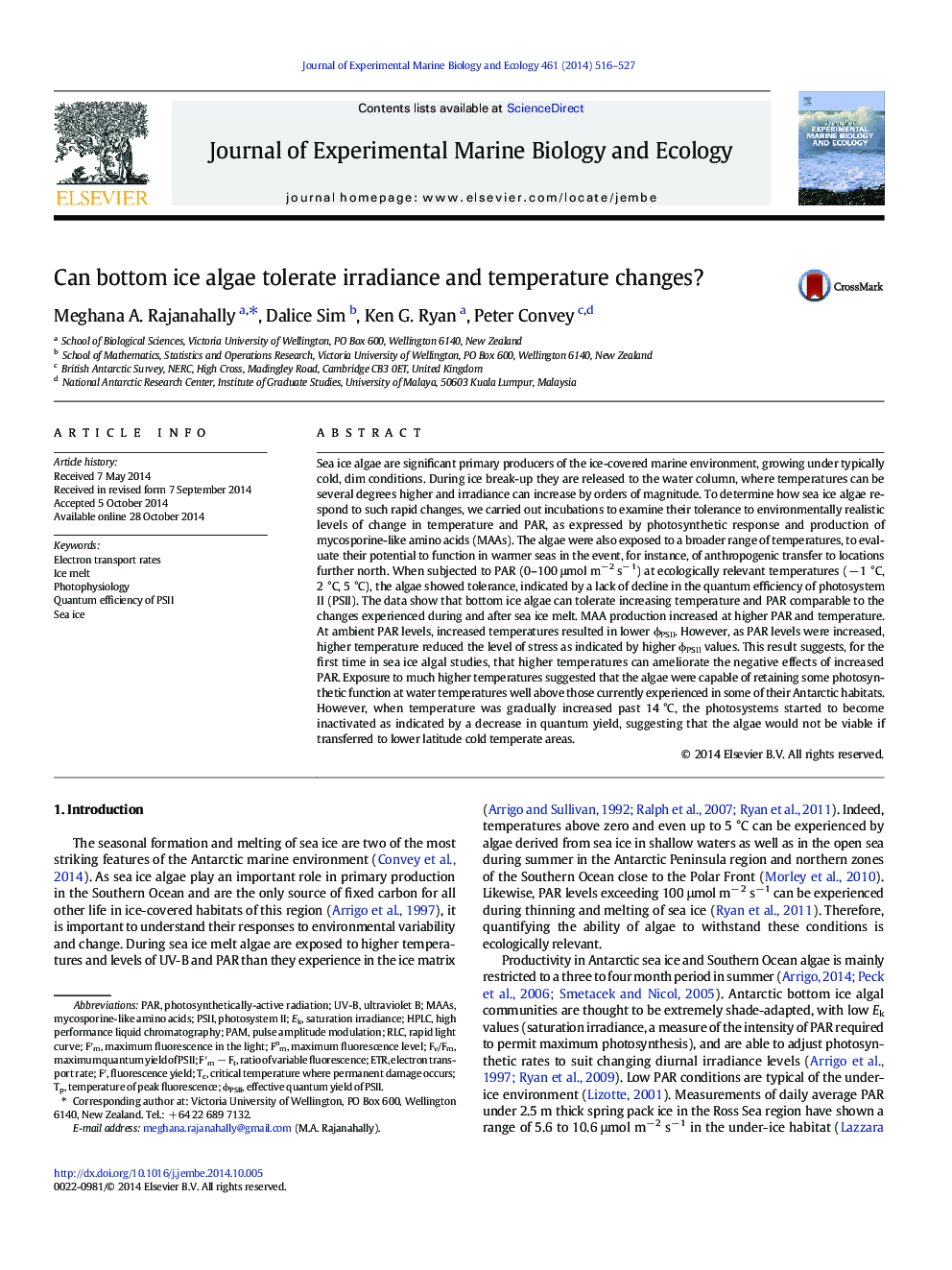| کد مقاله | کد نشریه | سال انتشار | مقاله انگلیسی | نسخه تمام متن |
|---|---|---|---|---|
| 6304036 | 1618414 | 2014 | 12 صفحه PDF | دانلود رایگان |
- Ice algae acclimate rapidly to increasing PAR at ecologically relevant temperatures.
- Higher temperature can ameliorate increased PAR stress.
- MAA production stimulated by PAR and temperature even in the absence of UV radiation
- Mixed ice algal communities of Ross Sea can tolerate higher PAR.
Sea ice algae are significant primary producers of the ice-covered marine environment, growing under typically cold, dim conditions. During ice break-up they are released to the water column, where temperatures can be several degrees higher and irradiance can increase by orders of magnitude. To determine how sea ice algae respond to such rapid changes, we carried out incubations to examine their tolerance to environmentally realistic levels of change in temperature and PAR, as expressed by photosynthetic response and production of mycosporine-like amino acids (MAAs). The algae were also exposed to a broader range of temperatures, to evaluate their potential to function in warmer seas in the event, for instance, of anthropogenic transfer to locations further north. When subjected to PAR (0-100 μmol mâ 2 sâ 1) at ecologically relevant temperatures (â 1 °C, 2 °C, 5 °C), the algae showed tolerance, indicated by a lack of decline in the quantum efficiency of photosystem II (PSII). The data show that bottom ice algae can tolerate increasing temperature and PAR comparable to the changes experienced during and after sea ice melt. MAA production increased at higher PAR and temperature. At ambient PAR levels, increased temperatures resulted in lower ÏPSII. However, as PAR levels were increased, higher temperature reduced the level of stress as indicated by higher ÏPSII values. This result suggests, for the first time in sea ice algal studies, that higher temperatures can ameliorate the negative effects of increased PAR. Exposure to much higher temperatures suggested that the algae were capable of retaining some photosynthetic function at water temperatures well above those currently experienced in some of their Antarctic habitats. However, when temperature was gradually increased past 14 °C, the photosystems started to become inactivated as indicated by a decrease in quantum yield, suggesting that the algae would not be viable if transferred to lower latitude cold temperate areas.
Journal: Journal of Experimental Marine Biology and Ecology - Volume 461, December 2014, Pages 516-527
